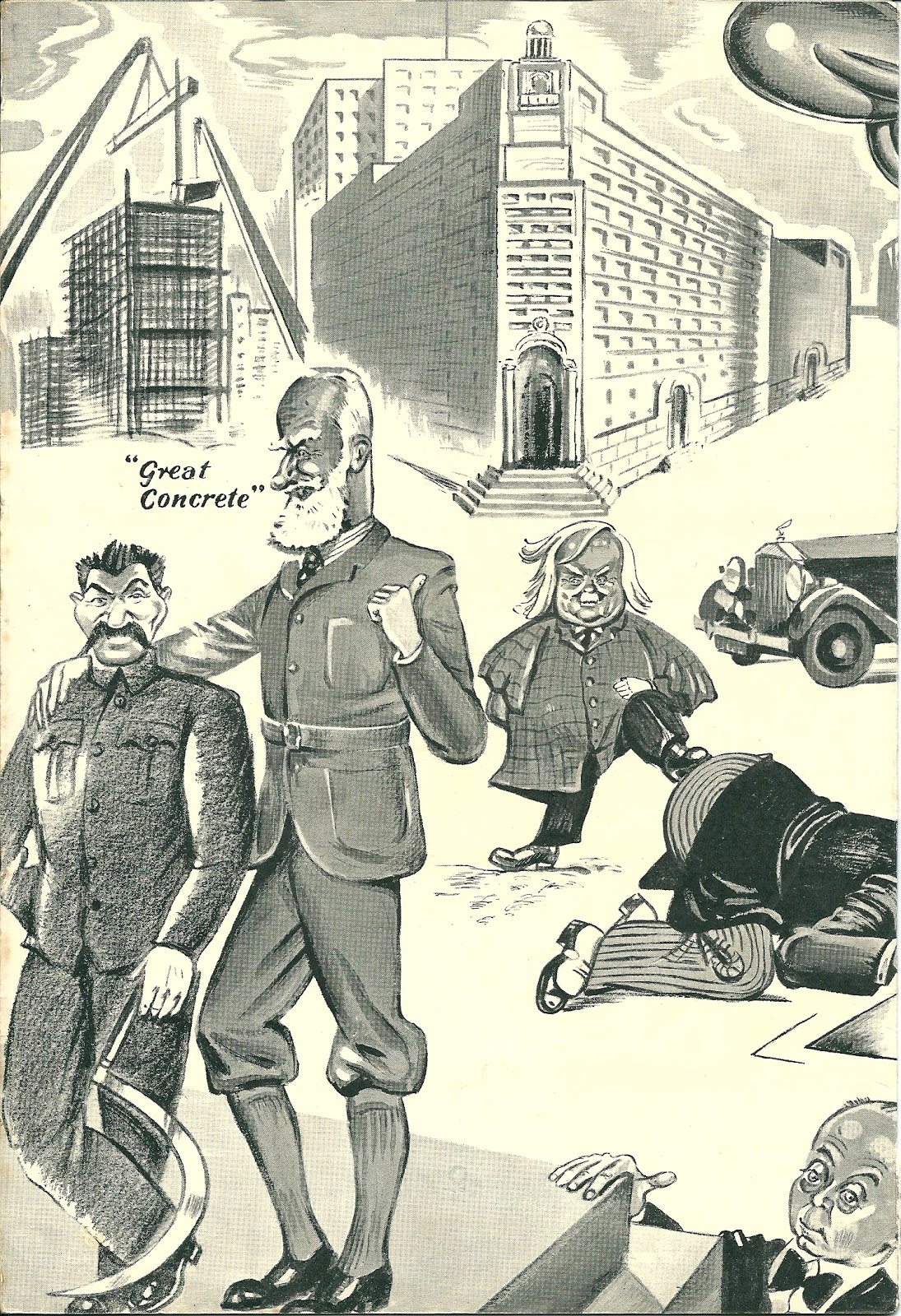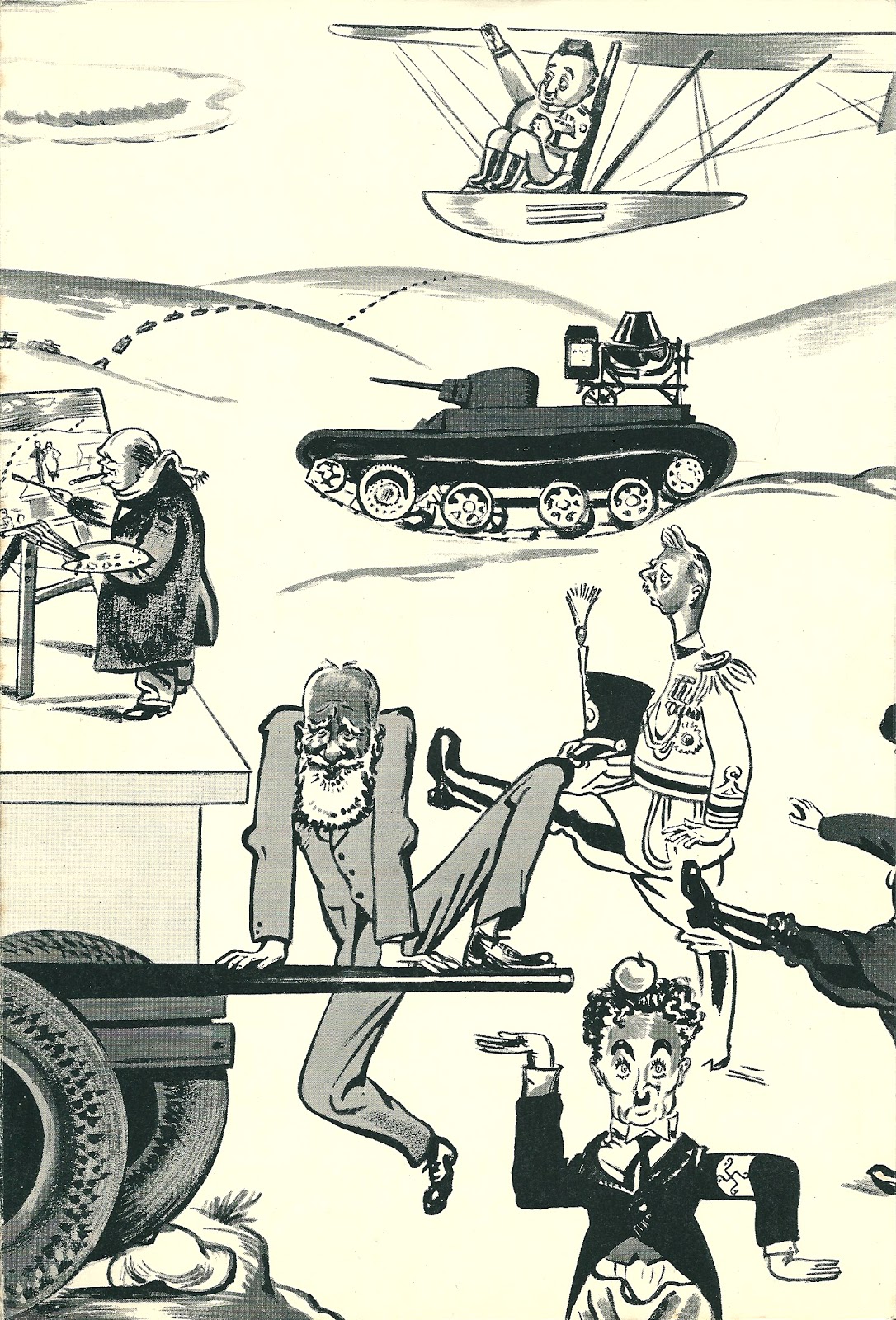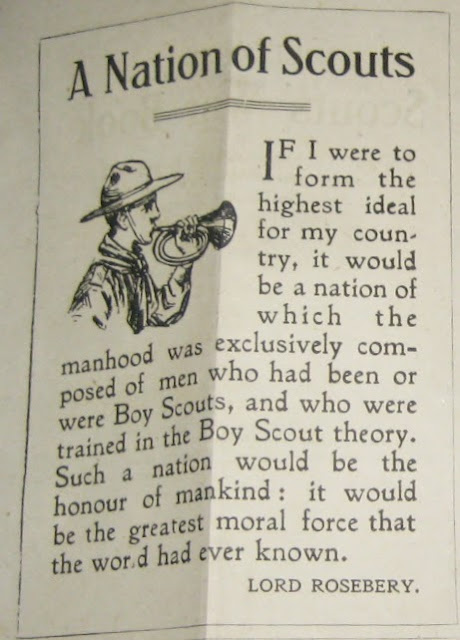A pass issued in 1915, by Belfast City Tramways enabling Boy Scouts - in uniform - to travel free of charge on the city's tram network.
Telling the story of 2000 years of conflict and invasion in the Frontline County of Kent
Saturday, October 19, 2013
Saturday, September 21, 2013
Scout Camp at Seasalter August 1912
Little did this group of Scouts and their leaders realise that within 2 years of this carefree camp at Seasalter, that the Country would be entering the First World War.
The Scouts and Leaders are from Number 3, Lady Harris' Own, Faversham.
Sunday, September 15, 2013
WW1 Postcard - Kent the Doorway to England
Postcard produced
by Voile and Roberson's of Faversham. The card appears to be a recruitment
advertisement for an early form of 'Home Guard' - "Kent The Doorway of England - I had rather be a doorkeeper in the County of Kent than dwell in the Tents of the Huns."
Thursday, September 05, 2013
Boy Scouts in WW1 - Wilmot Lunt
Superb Wilmot Lunt cartoon published
in 'Punch' on October 21st 1914. Lunt was a regular contributor to Punch and other periodicals throughout WW1.
Born as Samuel Wilmot Lunt in Warrington, Cheshire. Lunt attended the Académie Julian in Paris and showed at Paris Salon in 1901
This
scene depicts Boy Scouts who have been deployed in duties such
as guarding the Country's coastlines and railway network. This particular pair of Scouts are shown hunting Germans:
Boy Scout "Xcuse me Mum, 'ave yer seen any Germans about 'ere?"
Boy Scouts in WW1 - Cartoonist Bert Thomas (1883-1966)
Bert Thomas joined 'Punch' the British weekly magazine of humour and satire in 1905 and contributed until 1935. During the First World War he was in the Artist Rifles.
Thomas' political cartoons started to be included in gallery
exhibitions as artistic caricatures as early as 1913, in an exhibition
on the Strand by the Society of Humorous Art.
Thomas became famous for drawing also drew
the cartoon of a grinning soldier lighting a
pipe with the caption “’Arf a mo’ Kaiser!”. The cartoon appeared in the Weekly Dispatch
in aid of the paper’s 'Tobacco-for-Troops Fund' which raised around
£250,000. In
1936 his illustrations for a series of readers’ letters in the Evening News were labeled “Half a mo’ stories” and in the Second World War the cartoon reappeared with the caption “Half a mo’ Hitler”.
On October 2nd 1918, 'Punch' published a Bert Thomas cartoon depicting a boy speaking to his father, an Army officer. The boy is alluding that his Scoutmaster knows more about military tactics than his father:
Boy: "Here's my Scout-Master coming Dad. I'll introduce you. If you talk
about military subjects be careful won't you? Because he's awfully
clever."

Tuesday, September 03, 2013
WW2 - 'The Ironside Plan'
The Ironside Plan

Lieutenant-General Thorne was appointed to oversee the defence of Kent and the South East of England and Kent. Thorne considered the enemy would make landings between Graveney and Dover and he ordered the construction of obstacles and fortifications laid down a line across the marshes incorporating the railway and where possible natural features. The defences became known as the – ‘Coastal Crust’.
In 1940 General William Ironside, Chief of the Imperial General Staff proposed plans to defend and fortify the country to counter the threat of German invasion. Ironside pronounced his plan would - "Prevent the enemy from running riot and tearing the guts out of the Country."
‘Coastal Crust'
Troops constructing Z1 invasion barrier
Lieutenant-General Thorne was appointed to oversee the defence of Kent and the South East of England and Kent. Thorne considered the enemy would make landings between Graveney and Dover and he ordered the construction of obstacles and fortifications laid down a line across the marshes incorporating the railway and where possible natural features. The defences became known as the – ‘Coastal Crust’.
Monday, September 02, 2013
Emilio Coia - Wartime Cartoonist
Emilio Coia
Emilio Coia was born in Glasgow on 13 April 1911, the
son of Giovanni Coia, an Italian immigrant who owned ice-cream shops and
cafes in the city. Educated at St Mungo's Academy, Glasgow, Coia began
studying at the Glasgow School of Art in 1927, at the age of sixteen,
under Maurice Greiffenhagen who quickly recognised his talents as a
caricaturist.
While still a student Coia drew for GUM - the Glasgow
University Magazine, and was the first artist to cover the General
Assembly of the Church of Scotland, for the Scots Observer. After five
years at art school, and in the face of parental opposition to his
marrying a protestant, Coia eloped to London with a fellow student.
With just twelve pounds to his name, Coia touted his drawings around Fleet Street, selling his first caricatures to the Sunday Chronicle. He also contributed to Everybody's, Bookman, the Daily Express, Tatler, Sketch, Passing Show, Sunday Referee, Week-end Review, News Chronicle and others. Coia was hailed as "the first Cubist caricaturist", but in 1932 his association with the Sunday Chronicle came to a sudden end when the paper's most influential columnist, Beverley Nichols, objected strongly to Coia's drawing of his friend the novelist Ethel Mannin. He demanded that it be removed from the artist's first one-man show at the Reid & Lefebre Gallery, London, and when Coia refused he was sacked by the Chronicle's editor James Drawbell.
Soon his abilities came to be recognised and he drew and became friends with Bernard Shaw, G K Chesterton, W H Auden, Rebecca West, T S Elliott, Evelyn Waugh, the Sitwells, Max Beerbohm, D H Lawrence, Henry Moore, Augustus John, Stephen Spender, George Braque, W H Auden, Alfred Hitchcock, Hugh McDiarmid, Cary Grant, Henry Moore and Stravinsky, among many other personalities from the realms of art, literature and the theatre.
With just twelve pounds to his name, Coia touted his drawings around Fleet Street, selling his first caricatures to the Sunday Chronicle. He also contributed to Everybody's, Bookman, the Daily Express, Tatler, Sketch, Passing Show, Sunday Referee, Week-end Review, News Chronicle and others. Coia was hailed as "the first Cubist caricaturist", but in 1932 his association with the Sunday Chronicle came to a sudden end when the paper's most influential columnist, Beverley Nichols, objected strongly to Coia's drawing of his friend the novelist Ethel Mannin. He demanded that it be removed from the artist's first one-man show at the Reid & Lefebre Gallery, London, and when Coia refused he was sacked by the Chronicle's editor James Drawbell.
Soon his abilities came to be recognised and he drew and became friends with Bernard Shaw, G K Chesterton, W H Auden, Rebecca West, T S Elliott, Evelyn Waugh, the Sitwells, Max Beerbohm, D H Lawrence, Henry Moore, Augustus John, Stephen Spender, George Braque, W H Auden, Alfred Hitchcock, Hugh McDiarmid, Cary Grant, Henry Moore and Stravinsky, among many other personalities from the realms of art, literature and the theatre.
Many of the caricatures featured in his first one-man exhibition in 1932 at the Reid and Lefebre Gallery in London. But high prices were not paid for caricatures; and he also lost his newspaper job at the insistence of the well-known and influential Chronicle columnist, Beverly Nichols, who objected to Coia’s caricature of his friend, the novelist, Ethel Mannin. Emilio later remarked that her surname was appropriate.
 |
| Winget Factory in Strood, Kent |
Coia created Miss Swinger for Winget Life
- Winget's in-house magazine. Miss Swinget's adventures appeared in
the early editions of the magazine in 1939. She had escapades in the and
encounters with amorous admirers. Her exploits however were short lived
and once the Phoney War was over she was abandoned in favour of news
relating to the company's war work.
 |
| Miss Swinget circa 1939 |
Coia Cartoon " Winget Concrete is Great Concrete"
Joseph Stalin George Bernard Shaw
Lord Chatfield Winston Churchill
Coia Cartoon "Great Concrete" Number 3
 |
| Mussolini Hitler |
More Characters from the 'Tankerton Tapestry'
Dave Chisholm - Characters from the 'Tankerton Tapestry
 |
| Canterbury & Whitstable Railway |
 |
| Police Constable and Air Raid Precautions Warden |
 |
| Fisherman in Whitstable Harbour |
 |
| Camouflaging a pillbox |
 |
| Boy using his Dad's wire cutters to get to the beach |
 |
| Army Nurse and member of Women's Army Auxiliary Corps |
 |
| Auxiliary Fireman |
 |
| Constructing tank traps and barbed wire entanglement |
 |
| Army Nurse |
 |
| Member of the Women’s Voluntary Services |
 |
| Soldier and camouflaged pillbox |
Sunday, September 01, 2013
WW2 - Special Constables in War Time Kent

A nice find on eBay - 'Kent Special Constabulary: Special Constables in War Time'.
The manual provides guidance to the volunteer police officers who played such an important role during WW2.
I will scan and post the contents.
Tuesday, August 27, 2013
Limes Oblitus - The Forgotten Frontline
Many thanks to Ray Laurence, Karla Pollmann and Dunstan Lowe from the School of European Culture and Languages, Department of Classical & Archaeological Studies at the University of Kent for their help and advice in providing a translation for 'The Forgotten Frontline' - 'Limes oblitus'.
Custard Cream Castle - Could we do something like this in Kent...??
Could we do something like this in Kent..??
Carlisle Castle has been recreated in cake form by a team of volunteers armed with thousands of custard creams.
Staff from three local baking firms used 5,000 of the biscuits to help create the structure as part of the city's summer pageant celebrations.
It took the group three days to complete the castle, which measures about 1.2m (4ft) square. Visitors were able to sample a piece of the creation during the pageant.
Volunteers came forward after a Facebook appeal from English Heritage, which runs the castle.
Carlisle Castle has been recreated in cake form by a team of volunteers armed with thousands of custard creams.
Staff from three local baking firms used 5,000 of the biscuits to help create the structure as part of the city's summer pageant celebrations.
It took the group three days to complete the castle, which measures about 1.2m (4ft) square. Visitors were able to sample a piece of the creation during the pageant.
Volunteers came forward after a Facebook appeal from English Heritage, which runs the castle.
Let us know if you have any suggestions.
Monday, August 26, 2013
Boy Scouts - The the greatest moral force that the World had ever known?
In 1912, former British Prime Minister Lord Rosebery provided some memorable observations, made in the course of an address he gave to the Boy Scouts of Midlothian:
It would be the greatest moral force that the World had ever known."
"If I were to form the highest ideal for my country, it would be a nation of which the manhood was exclusively composed of men who had been, or were, Boy Scouts, and were trained in the Boy Scout theory...
Such a nation would be the honour of Mankind...
Scout's War Book - Lloyd's Weekly News 1914
Published by Lloyd's Weekly News in 1914 - the "Scouts War Book" provided advice and guidance on a range of tasks and activities for Boy Scouts involved,or hoping to become involved, in the war effort, including:
What to do in air raids
First Aid
Facts about Army Navy flying
Wolf Cubs
How to become a Scout
From the Guardian's Archive "The Scout's part in the War"- December 1914
Originally published in the Manchester Guardian in December 1914, this short article highlights the role of the Boy Scouts during the First World War entitled- "The Scout's part in the War"
Most of us know, for the press was generous, what he
did at the outbreak of the war – how he helped the police and
Territorials in guarding bridges and culverts, telegraph and railway
lines, often keeping night watch, and running what might have proved
serious risks; how on foot and cycle he delivered countless messages,
and reported several not imaginary spies; and how he enjoyed it all,
feeling that at last he was playing the real game, as a recognised
servant of the King.
For the Scouts, too, in all countries, were mobilised, and I imagine that in varying ways they have equally proved their value everywhere.
In Belgium they have seen much active service.
In France many have made their way to the front, and serve as despatch riders – one such, after being wounded in Alsace, near Rheims, and at Ypres, is in Manchester, and many more have been organised for ambulance work and for replacing minor cogs in the administrative wheel.
A.H.H
The time perhaps has come when we may usefully consider to what
extent the Boy Scout movement has justified its existence as a helpful
agency in time of war. Only a few years back we were most of us smiling
at the mimic warfare of the bare-kneed youngster with the broomstick.
Now that the country is up against the real thing, and even a boy
counts, what do we find that this same small warrior has learnt to do?
What real service does he render that has won his picturesque and
healthy uniform official recognition? In what way has he, adding his
little contribution to the common store, deserved well of his
Fatherland?
For the Scouts, too, in all countries, were mobilised, and I imagine that in varying ways they have equally proved their value everywhere.
In Belgium they have seen much active service.
In France many have made their way to the front, and serve as despatch riders – one such, after being wounded in Alsace, near Rheims, and at Ypres, is in Manchester, and many more have been organised for ambulance work and for replacing minor cogs in the administrative wheel.
Personally, I shall not easily forget the sight of French Scouts
piloting our own soldiers round at Havre in August acting as guides,
interpreters, and very faithful squires. "Please tell Baden-Powell that I
don't know how we should get on without these little chaps," was the
repeated request of officer and private alike.
In England some
fourteen hundred Scouts have, since the war began, been patrolling the
coasts keeping watch, signalling ships, and generally replacing
coastguards now on active service.
A motor ambulance manned by expert
Scouts is being sent to France.
Over ten thousand ex-Scouts are known to
be with the colours, and officers have abundantly recognised the value
of their training and their spirit.
The Boy Scouts have offered to raise
for service at the front a full battalion of cyclists, provided with
machines and a guaranteed proficiency in scouting and despatch-riding.
A.H.H
FFL Blogger - Social Network Update
We have now added Google + and Linkedin to The FFL Blogspot profile.
Saturday, August 24, 2013
The Faversham Air Raid 1915 - Latest research
Good
work by FFL Researcher John Stone - who has been spending some time in local libraries undertaking research into the German air raid on Faversham, Sittingbourne and Sheppey in April 1915.
John has found a book called: ‘A Glint in the Sky' – German WW1 air attacks
on Folkestone, Dover, Ramsgate and Margate and other Kentish Towns. This book describes the raids on Faversham along the
lines of previous newspaper but with the following differences:
- They refer to the plane as being an Albatross B11 rather than a Taube. (From what I have found on the internet, the early version of the Albatross was a two seater with the pilot at the rear and the observer at the front. The observer’s view of the ground was totally obstructed by the wings! The Taube was a single seater.)
- One bomb landed close to the Kingsferry Bridge.
- 12 Planes were scrambled from RNAS Eastchurch, Manston and Dover. I have tried without success to obtain operational details on Eastchurch but will now try Manston and Dover. They say that the raider escaped.
Wednesday, August 07, 2013
WW1 - What does it mean to you?
With the
start of the First World War Centenary one year away, what does it mean
to you?
Join the conversation on Twitter @IWM_Centenary and on Facebook/FirstWorldWarCentenary and let everyone know your thoughts on the commemorations. #WW1Centenary
Tuesday, August 06, 2013
1915 - Aeroplane Raid on Faversham, Sittingbourne & Sheppey
Subscribe to:
Posts (Atom)

































